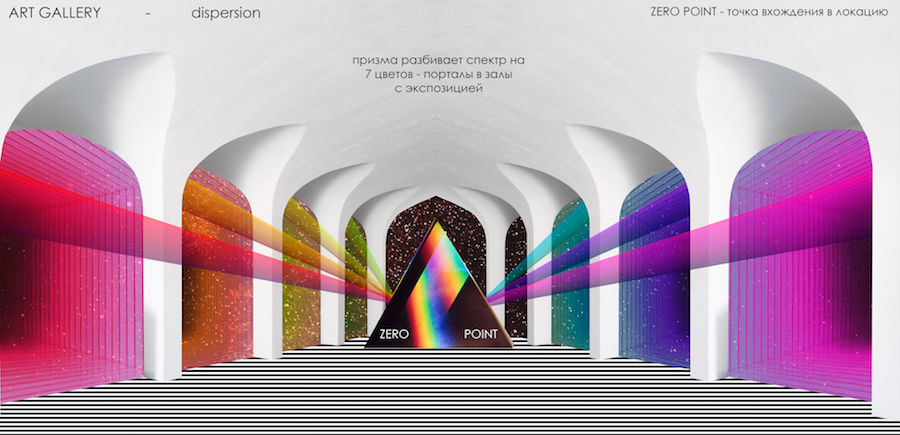
The idea of metaverse can be defined as "the second world" if we divide the space to digital and physical. With the arrival of VR, AR, and XR the concept of metaverse is becoming the more and more frequent topic of discussions of cultural production, as well as about how we consume and perceive art.
Only a couple of years back digital projects had not that much attention from the art world, even though projects like this have existed since the 60s of last decade. Historians and art critics simply didn’t think that such projects were worthy. The situation has changed over the years of the pandemic, along with the growing popularity of NFT, the Zoom app and talks about the metaverse. And finally, eminent collectors and large institutions are already seriously interested in digital projects. Even those who, it would seem, couldn’t think about it. For example, last year the State Hermitage Museum, which has a 257-year history, sold NFT tokens of digital copies of paintings from its collection for 32.5 million rubles. And this is only for one auction. One of the oldest auction houses Sotheby's has launched a new project called Sotheby's Metaverse, which presents NFTs created by experts in the field of art. It was designed purposely for digital collectors. Last year, in March, the artwork or, to call it simply, a picture "Everydays: The First 5000 Days" in JPG format made by digital artist Beeple was sold for $69 million. The artist collected 5,000 pieces of digital art that he had been creating every day for the past few years into one large digital canvas… Auction house Christie's said that this particular artwork had become the most expensive piece of digital art ever sold. And this impressive sum received by the artist Mike Winkelmann (that's the name of the author under the nickname Beeple in the world) for the sale became the third largest ever received by a living artist. Later in an interview, the artist stated that he’d never hoped to sell his work for more than $1,000.
Once again, let’s figure out what NFT is and what’s the difference between buying such art and just downloading a picture. NFT is an abbreviation for non-fungible token. The main difference between ordinary cryptocurrency and NFT is that NFT is unique, what comes from the name. In fact, it’s a digital certificate of ownership authenticity that lives in a secure system called blockchain. It proves that you are the real owner of this artwork. Digital art did not appear today or yesterday, but it’s always been difficult to collect, and the market practically did not exist. The main problem was that it was impossible to prove authorship, and it was also unclear how to store the work. Files can be copied — uniqueness is difficult to prove. Now this is possible and it’s the main engine of the development of digital art and metaverses.
Already in a month and a half Artocratia will launch its own metaverse. It’ll reach an absolutely new level of communication with art that we can see in real life. We’re witnessing the birth of new avant-garde - the same with the things happened in the beginning of the last decade. And all together - we’re a part of this revolution.
An entrance to the Artocratia metaverse is called Zero point. It’s a prisme that breaks the spectrum into 7 different colours. Each colour is a portal to exposition halls. The portal design will be created by using a golden ratio that assume an absolute harmony of proportions. We’ll tell you more about our other plans later. And there’s still less and less time till Artocratia metaverse launch. Create an account on artocratia.com to be in touch and stay informed about upcoming events.

